Find VA−VB in steady state
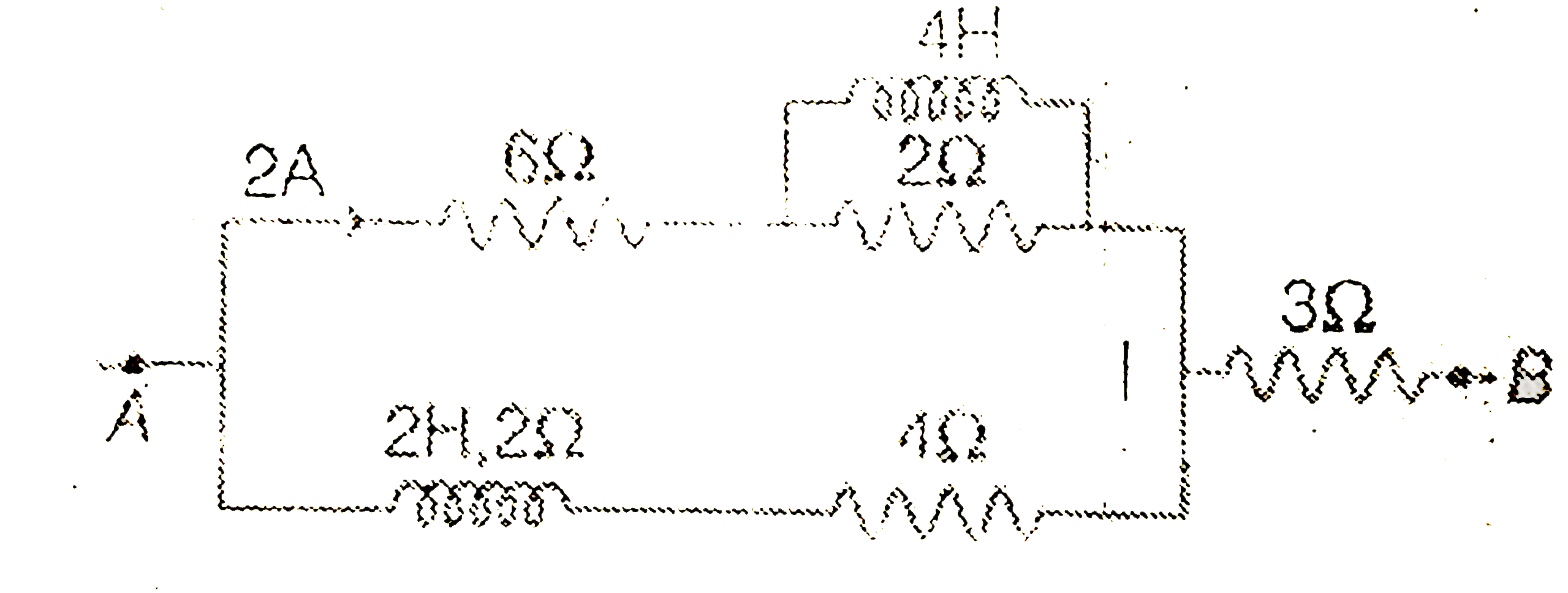
N=mgcos60∘=(6)(10)(12)=30newton
μsN=18newton
μkN=12newton
Driving force F0=mgsin60∘=(6)(10)(√32)=52N
(a) Force needed to keep the block stationary is
F1=F0−μsN (upwards)
=52−18
=34N (upwards)
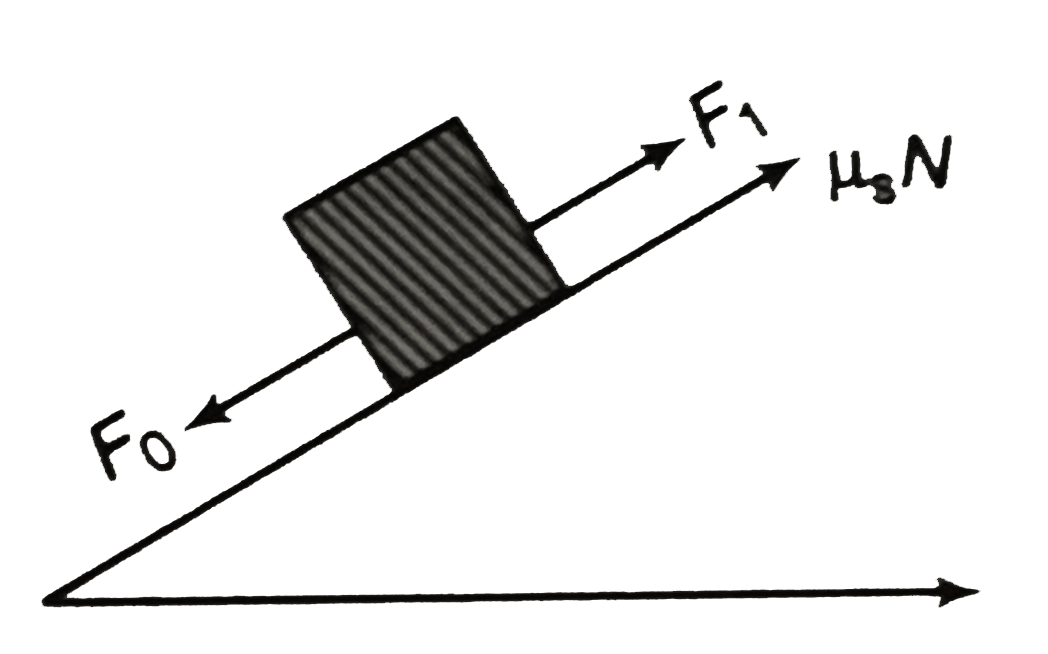
(b)If the block moves downwards with contact velocity (a=0,Fnet=0), then kinetic friction will act in upward direction.
:.Force needed,
F2=F0−μkN (upwards )
=52−12
=40N (upwards )

(c) In this case, Kinetic friction will act in downward direction
F3−F0−μkN=ma
or F3−52−12=ma=(6)(4)
F3=88N (upwards )
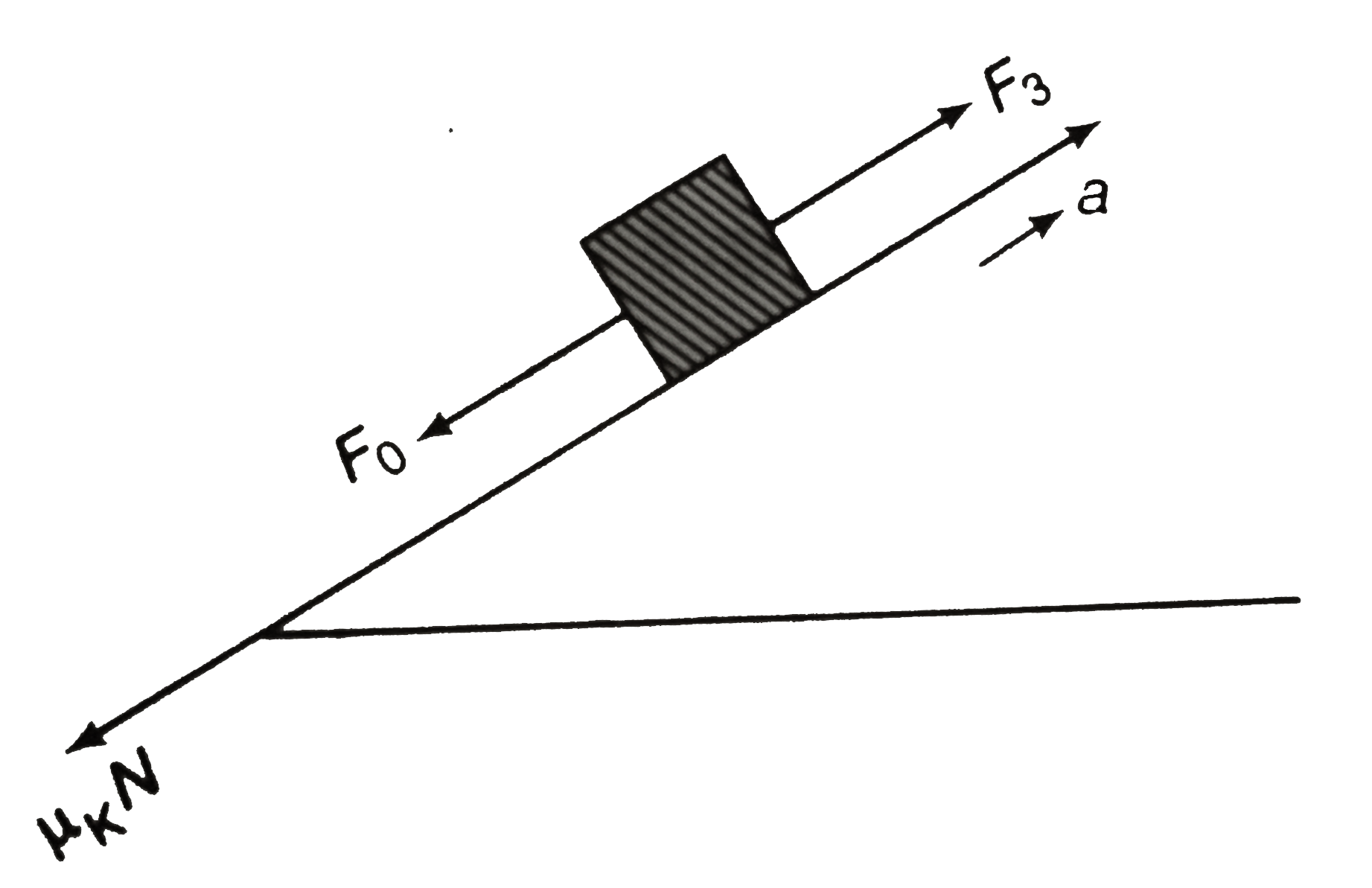
Topper's Solved these Questions
- LAWS OF MOTIONBook:DC PANDEY ENGLISHChapter:LAWS OF MOTIONExercise:Solved Examples
Explore 15 Videos
- LAWS OF MOTIONBook:DC PANDEY ENGLISHChapter:LAWS OF MOTIONExercise:Miscellaneous Examples
Explore 9 Videos
- KINEMATICS 1Book:DC PANDEY ENGLISHChapter:KINEMATICS 1Exercise:INTEGER_TYPE
Explore 15 Videos
- LAWS OF THERMODYNAMICSBook:DC PANDEY ENGLISHChapter:LAWS OF THERMODYNAMICSExercise:Level 2 Subjective
Explore 18 Videos
Similar Questions
Find VAB
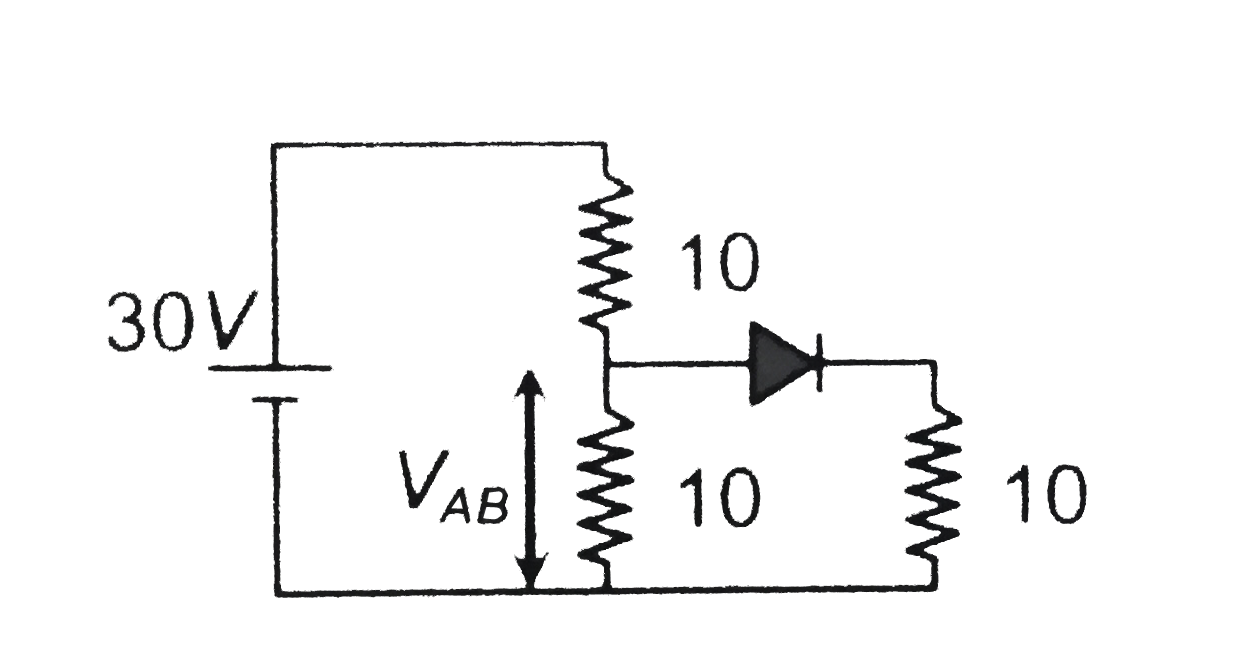
View SolutionFind VP−VQ in the circuit shown in figure.

View SolutionIn the circuit shown below the cell is ideal, with emf = 2 V: The resistance of the coil of the galvanometer G is 1Ω. Then, find the potential difference across C1 (in volts), in steady state
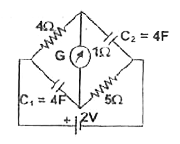
View SolutionThe equivalent resistance between A and B in fig. at steady state will be

View SolutionWhat is VA−VB in the arrangement shown in.What is the condition such that VA−VB=0
View SolutionAssertion : Two concentric spherical shells A and B are charged by charges qA and qB. If qA is negative, then VA−VB is also negative.
Reason : VA−VB=(qA4πε0)(1RA−1rB)
therefore, if qA is negative, then VA−VB is also negative.
View SolutionPotentail difference VA−VB in the network shown in
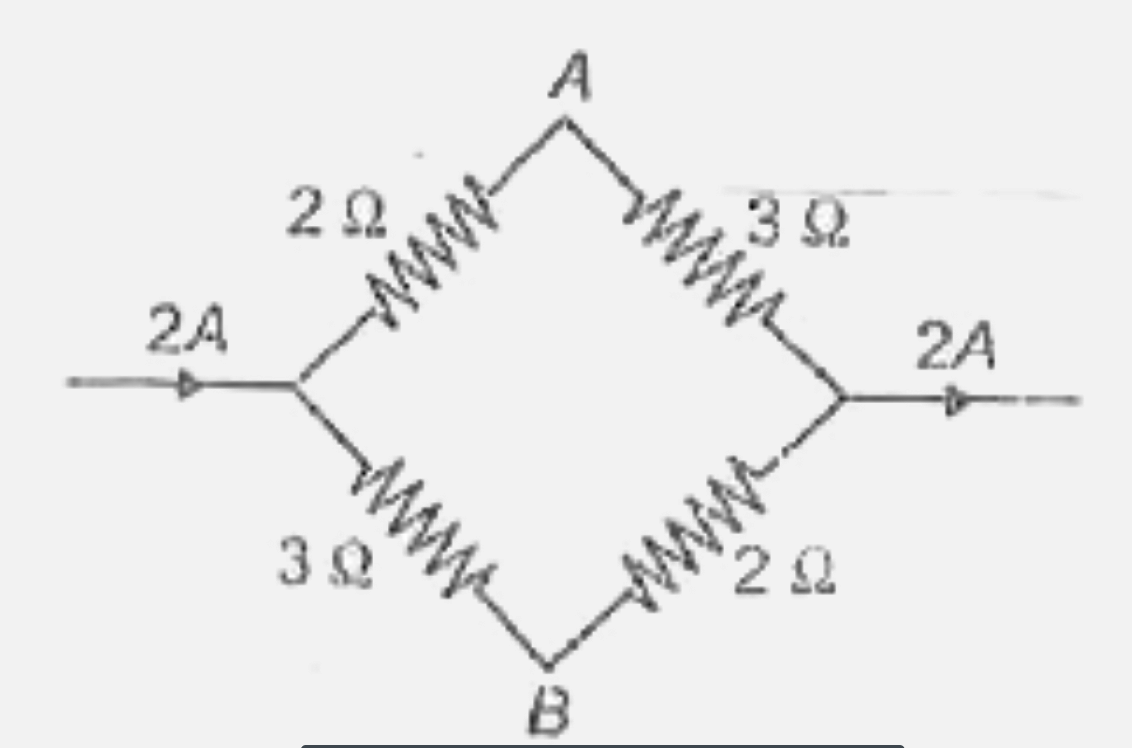
View SolutionIn the circuit as shown, VA−VB=V. The resistance of each wire AB, AC, etc are shown in the figure. Find the current in AC.
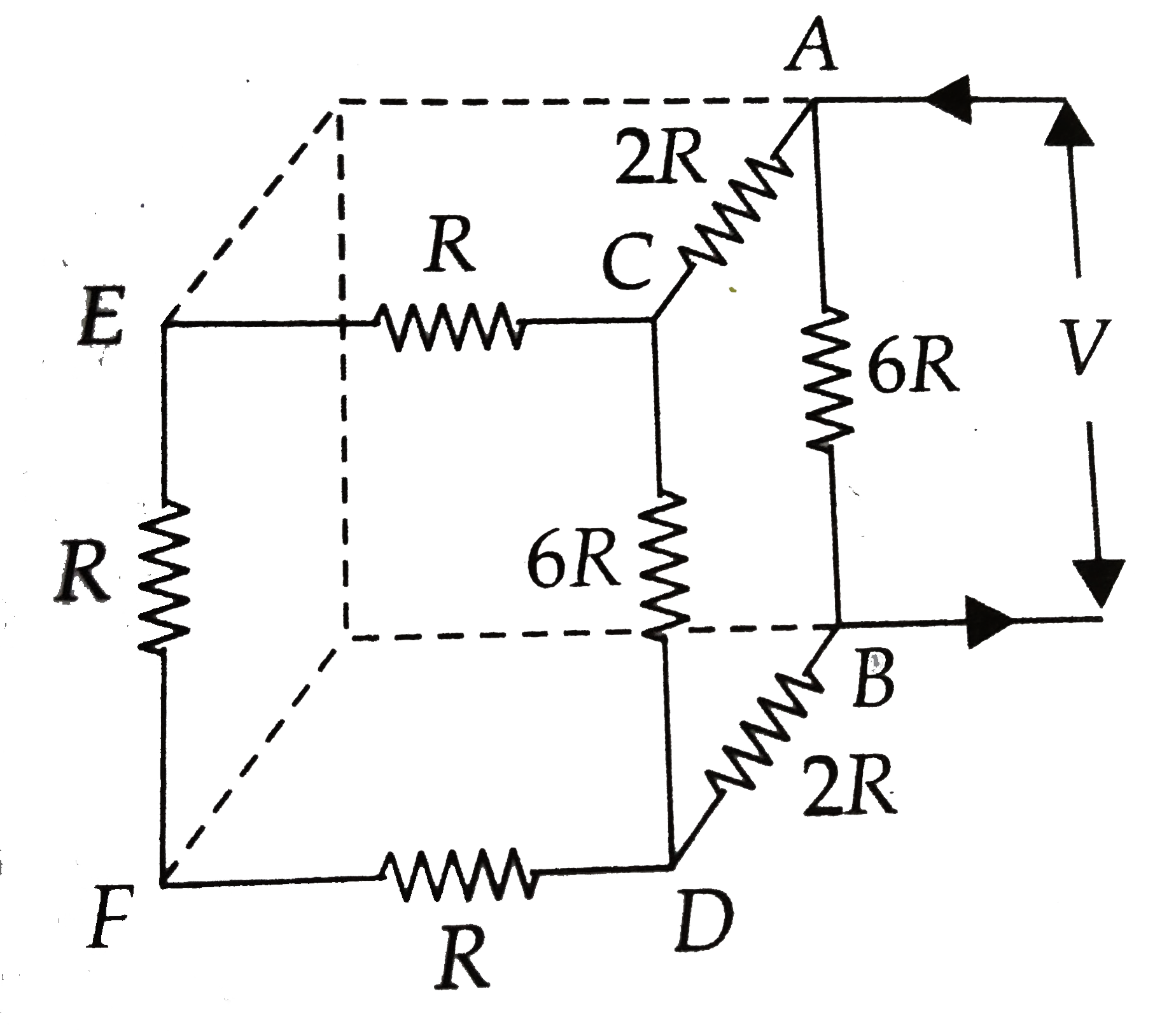
View Solution(a)Find the current I supplied by the battery in the network shown in figure in steady state. (b)find the charge on the capacitor.
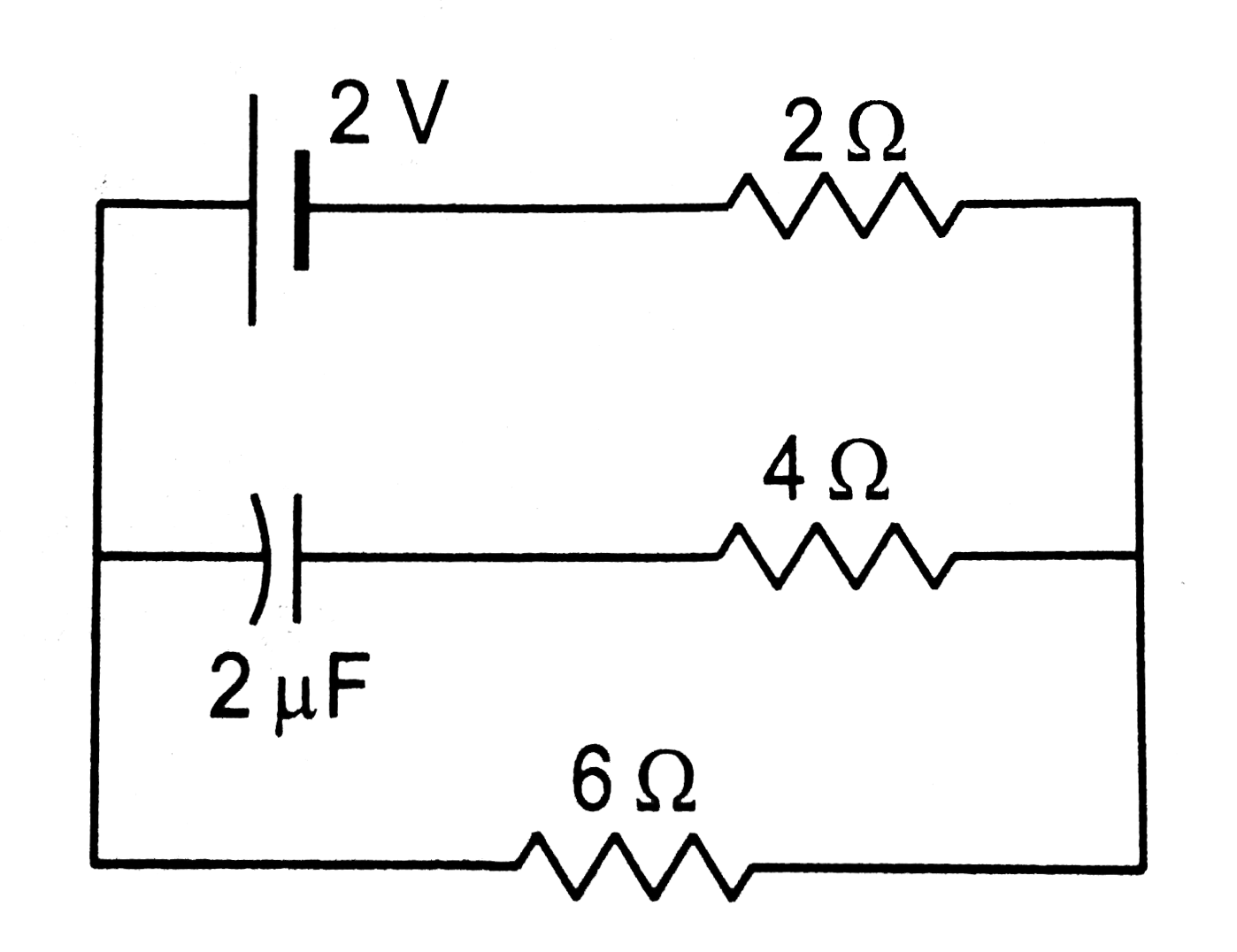
View SolutionConsider the circuit shown in fig 5.168. Find out the steady - state current in the 4Ω resistor. Assume the internal resistance of 8 V battery to be negligible.
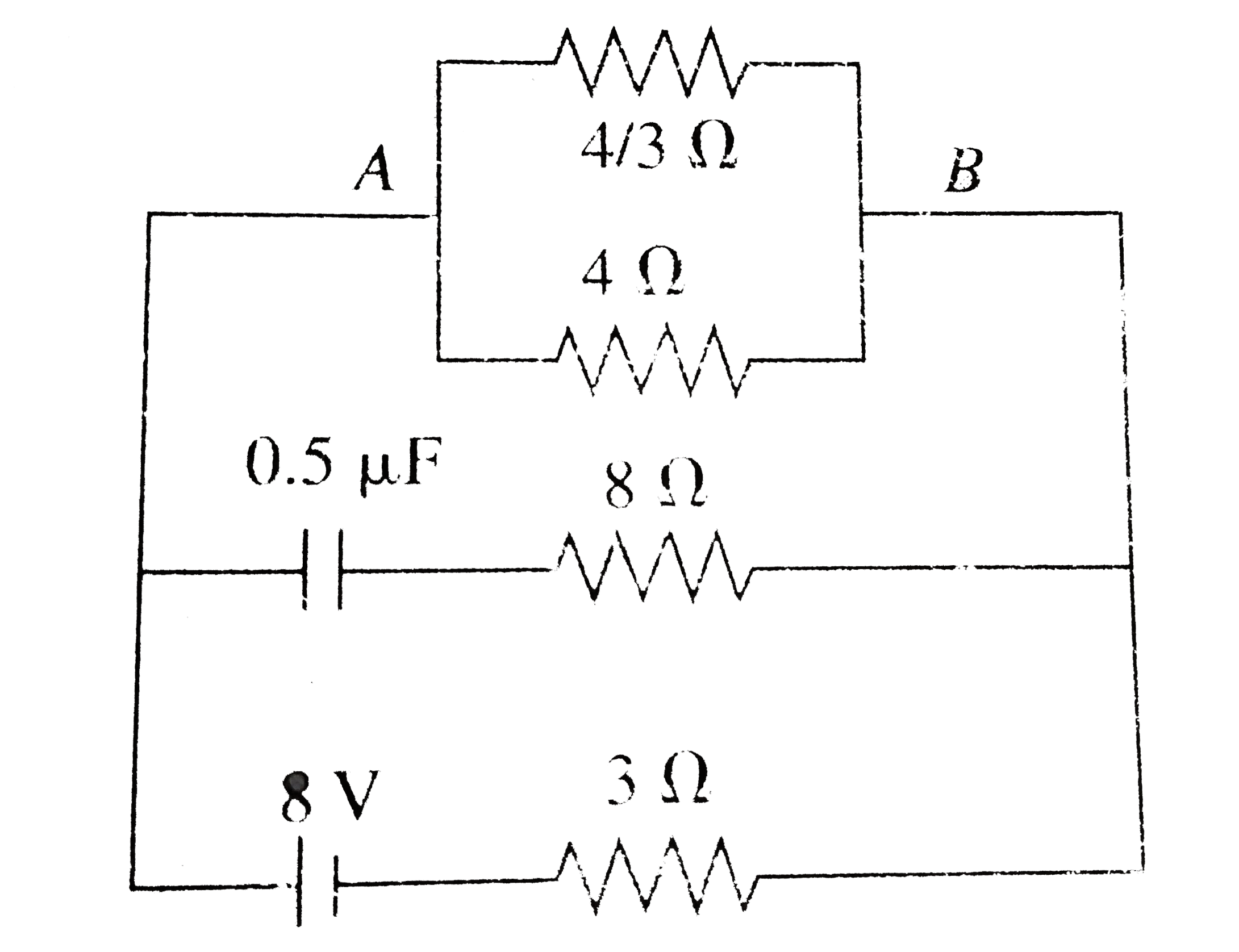
View Solution